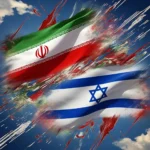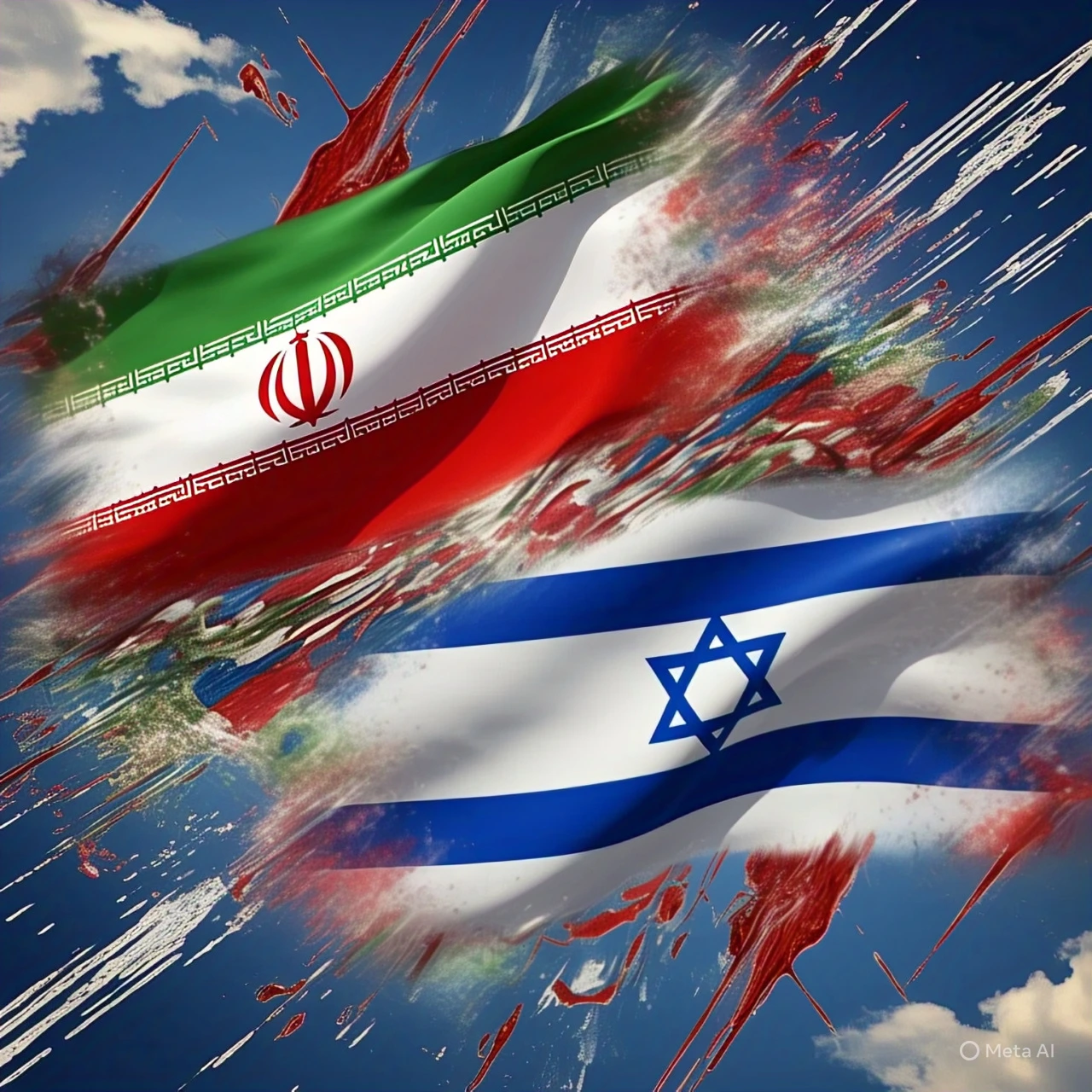The Israel-Iran Conflict: Understanding the Geopolitical Chessboard
In recent weeks, the world has been watching with trepidation as tensions between Iran, Israel, and the United States have escalated to dangerous levels. What we’re witnessing is not merely a regional dispute but a complex geopolitical game with far-reaching implications for global stability. This analysis aims to unpack the current situation, examine the key players’ strategies, and understand what’s truly at stake.
The Failed Israeli Strike and American Involvement
According to recent reports, including a significant article in The New York Times, Israel had been planning to target Iran’s nuclear facilities as early as May. However, these plans required American support, as such an attack would be virtually impossible without U.S. backing. The most telling revelation is that even if this attack had succeeded, it would have only delayed Iran’s nuclear program by approximately one year – suggesting the strategy was more about maintaining regional power dynamics than addressing genuine security concerns. What’s particularly significant is evidence suggesting Israel already attempted such an attack but failed. According to former British diplomat and MI6 officer Alastair Crooke, Israeli F-35 aircraft were detected approximately 70 kilometers outside Iranian airspace, forcing them to abort their mission. This indicates that Iran’s air defense systems, likely Russian-supplied S-300 and S-400 systems, are far more capable than Western media typically acknowledges. This failed attempt explains why Israeli Prime Minister Netanyahu traveled to Washington to request U.S. assistance, essentially asking America to lead an attack after Israel’s own efforts proved unsuccessful.
Iran’s Defense Capabilities: The Reality vs. Media Portrayal
Western media outlets consistently downplay the effectiveness of Iran’s defensive capabilities. However, video evidence from Iran’s missile attack on Israel (following Israel’s strike on Iran) shows numerous missiles successfully penetrating Israeli and American defense systems. This contradicts the narrative that no damage was inflicted. Former CIA official Larry Johnson has reported substantial evidence showing that Iranian air defenses effectively neutralized most of the bombs and missiles fired by Israel during its retaliatory strike. This reality creates a significant discrepancy between what’s being reported and what actually occurred. It’s worth noting that no media outlet would readily admit that their country’s military technology could be outperformed by adversaries’ defense systems. American media is unlikely to report that Russian-made air defense systems successfully detected supposedly “stealth” F-35 aircraft, or that Iranian missiles penetrated American-Israeli defense systems. Such admissions would have negative implications for national security perceptions and weapons sales.
The Yemen Connection: A Testing Ground for Strategy
The situation in Yemen provides additional context for understanding the broader conflict. The United States has been bombing Yemen, ostensibly to protect shipping routes through the Red Sea that the Houthis have blocked specifically for Israeli vessels. Despite continuous attacks, the U.S. has failed to reopen these shipping routes or deter Yemeni forces. This failure raises serious questions about America’s ability to successfully execute military operations against Iran, which possesses significantly more sophisticated defense systems and military capabilities than Yemen. Recent reports indicate American forces have primarily hit civilian targets in Yemen, rather than military ones, highlighting the challenges of effective targeting.
Inside American Decision-Making
The internal dynamics of American decision-making regarding Iran are equally concerning. Recent revelations from the “Signal Gate” scandal showed war plans being discussed on insecure channels, with Defense Secretary Pete Hegseth (a former Fox News presenter with no military or diplomatic experience) accidentally leaking information to journalists and family members. This lack of professionalism extends to diplomatic efforts, with negotiations between the U.S. and Iran being handled by Steve Witkoff, a New York real estate developer with no diplomatic experience. These negotiations are happening indirectly, with representatives from Oman passing messages between the two sides who refuse to meet face-to-face.
The Nuclear Negotiation Stalemate
The United States has presented three major demands to Iran:
- End their nuclear program
- End their long-distance missile program
- Stop supporting proxy groups
These demands effectively amount to complete surrender, making them unacceptable to Iran. The Iranian Foreign Minister has publicly stated: “Zero nuclear weapons equals we do have a deal. Zero enrichment equals we do not have a deal.” This position indicates Iran is willing to commit to not developing nuclear weapons but insists on maintaining uranium enrichment capabilities, particularly up to 20% for medical applications, with monitoring by the International Atomic Energy Agency (IAEA).
Regional Alignments and Their Significance
Recent diplomatic developments show significant realignment in the region:
- Saudi Arabia-Iran Relations: Saudi Arabia’s Defense Minister recently visited Iran, potentially to ensure their oil fields wouldn’t be targeted in case of conflict, or to maintain the diplomatic relations China helped broker between the two nations.
- Iran-Russia-China Cooperation: These three nations have conducted joint naval exercises and maintain substantial trade relationships. Russia supplies defense systems to Iran, while Iran provides drones to Russia. They share intelligence and have agreements to cooperate against common threats.
- BRICS Membership: Iran is now part of BRICS, further integrating it into an alternative global economic framework.
- Trade Routes: The Belt and Road Initiative trade routes passing through Iran are vital not only to China but also to Russia and potentially to India, creating economic incentives for these nations to prevent conflict.
The Dangerous Influence of Netanyahu and the Israel Lobby
A particularly concerning aspect of the current situation is the influence of Netanyahu and the Israel lobby on American foreign policy. Netanyahu’s “Clean Break Strategy” appears designed to draw America into conflicts with Iran and other adversaries of Israel, regardless of the broader consequences. The appointment of a former Israeli Ministry of Defense official as the National Security Council Director for Israel and Iran raises serious questions about whose interests are being prioritized in American foreign policy decisions. Several voices within Trump’s circle, including Pete Hegseth and Tulsi Gabbard, reportedly opposed attacking Iran. However, the continued influence of pro-Israel voices in decision-making circles remains strong.
The Path Forward
For now, negotiations between the U.S. and Iran continue, offering some hope for de-escalation. Any deal will likely focus primarily on Iran’s nuclear program, though finding common ground will require compromise from both sides. If negotiations fail and the U.S. follows Netanyahu’s aggressive approach, the consequences could be catastrophic. An attack on Iran would not only trigger immediate retaliation but would effectively put America in conflict with Russia, China, and much of the Global South. This, combined with ongoing trade wars and tariffs, would further isolate the United States internationally.
Conclusion
The world stands at a precarious crossroads. The decisions made in Washington, Tehran, and Jerusalem in the coming weeks could determine whether we move toward diplomatic resolution or devastating conflict. The evidence suggests that military action against Iran would be far more difficult and costly than many Western analysts acknowledge, while potentially triggering a wider regional or even global conflict. For the sake of global stability, we must hope that cooler heads prevail, and diplomatic solutions are found to address legitimate security concerns on all sides. The alternative—a war that could quickly spiral beyond control—is too dangerous to contemplate.
Read More:











